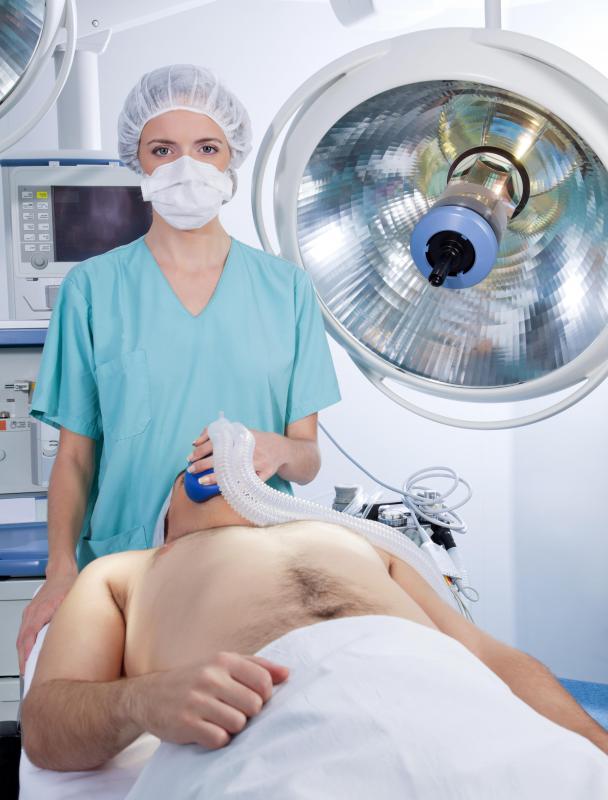At WiseGEEK, we're committed to delivering accurate, trustworthy information. Our expert-authored content is rigorously fact-checked and sourced from credible authorities. Discover how we uphold the highest standards in providing you with reliable knowledge.
What is a Klatskin Tumor?
A Klatskin tumor is a tumor which forms in the upper region of the bile duct, where the left and right bile ducts meet. This type of tumor is rare. Prognosis for the patient depends on the size of the tumor at the time of diagnosis, whether the left and right bile ducts are also involved, and the patient's general physical condition. Healthy patients with small, minimally involved tumors may recover, while others may have a grimmer prognosis. An experienced physician can evaluate the situation and discuss the prognosis with the patient, including the prognosis with different treatment options.
This tumor is a type of cholangiocarcinoma or bile duct tumor. The causes of bile duct tumors are not known, although people with cystic diseases of the liver, Crohn's disease, and other gastrointestinal diseases appear to be at increased risk of developing cholangiocarcinomas like Klatskin tumors. The tumor is named for the doctor who first described in 1965.

Patients with Klatskin tumors usually develop jaundice as a result of the blockage in the bile duct. They also have symptoms like weight loss, abdominal pain, dark urine, and clay-colored stools. The Klatskin tumor may be visible during medical imaging studies of the liver and bile duct. A biopsy of the liver will show malignant cells.
The best treatment for a Klatskin tumor is resection, in which the tumor is removed, with clean margins to remove any malignant cells which may be associated with the Klatskin tumor. This surgery is performed under general anesthesia. Adjuvant therapy such as chemotherapy and radiation is not usually recommended with surgery. If surgery is not an option because of the tumor's level of involvement, chemotherapy and radiation may be considered, although such tumors are often not very responsive to nonsurgical treatment.

When a patient is diagnosed with a Klatskin tumor, it can be helpful to get as much information possible about the tumor before making decisions about treatment. A doctor should be able to discuss the location of the tumor, the risks and benefits of surgery, and whether or not the candidate may be a good candidate for other treatment options. Because such tumors are rare, not a great deal of research is performed on them, but cancer researchers can and do work with cholangiocarcinomas and options such as drug trials may be available for patients who are willing and interested. Patients should note that people with comorbidities may not be accepted into drug trials.
AS FEATURED ON:
AS FEATURED ON:


















Discussion Comments
My family just got the news my sister has this disease. Se is only 47. I've been reading different stories and testimonies trying to get some insight on this.
Reading the testimonies is encouraging to the point of being educated. My sister had the surgery, and since the surgery has been having severe pains, but they couldn't figure it out, even with all the medical knowledge our family has. The doctors couldn't find out where the pain was coming from even after requesting for more testing to make sure the fluid didn't leak but the answer was always no.
Then this week she had to be rushed to surgery to unblock her small intestine, and come to find out, the fluid did leak into her stomach, which they said previously didn't happen. Thank you for the info and personal testimony. --Heart heavy in PA
@orangey03 - My uncle’s case was very severe. In addition to having his tumors removed, he had to have one whole side of his liver removed. The tumors had invaded the blood vessels in his liver to the point that this was the only option.
If he had not had the operation, he would only have had roughly 6 months to live, the doctors said. Patients whose lymph nodes have not been affected by the cancer have a 5-year survival rate of 54%. Survival rates range between 22% and 66% for those who have had part of their liver removed, but the chances are better for those whose lymph nodes are okay.
My uncle’s lymph nodes were affected with the cancer, so he did not make it. Tell your aunt to go ahead and have her tumors removed as soon as possible.
@Oceana - My aunt has Klatskin tumors. I think that she should be okay, because the tumors are small. Was your uncle’s case severe? Did he have to have surgery?
My uncle had bile duct cancer with Klatskin tumors. I did not know this before he got cancer, but I learned that the bile duct connects the liver and the intestines, and it moves the bile to the intestines.
The top of the bile duct works with the liver, and the bottom half works with the pancreas. When the bile duct gets blocked by Klatskin tumors, bile builds up in the blood and the skin turns yellow with jaundice.
Klatskin tumors show up in about 4,000 people each year in the United States. Bile duct cancer often affects people over 65, and my uncle was 70 when he was diagnosed.
Post your comments